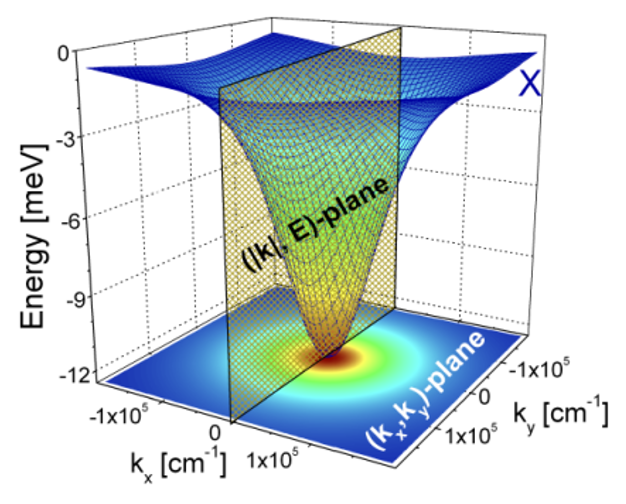
Liuxf's Group

Liuxf's Group
| Research |
1. Carrier transport imaging by ultrafast microscopy

Transient reflectivity microscopy, derived from the well-established femtosecond time-resolved transient absorption technique, combines wide-field high-resolution microscopy to provide detailed spatial information. By employing methods like spatial filtering and oil immersion, the pump spot size is reduced close to the diffraction limit, achieving temporal resolutions on the order of hundreds of femtoseconds and spatial precision down to 400 nm. This allows for real-space visualization of particle and quasiparticle transport. As a versatile tool, this technique enables the observation of ultrafast phenomena such as carrier transport, exciton migration, and phonon dynamics, particularly at the surfaces and interfaces of advanced semiconductors, two-dimensional materials, quantum dot arrays, and other novel systems. Science, 377, 433-436 (2022)
2. Carrier transport imaging by streak camera

A stripe camera is a transient optical process measurement instrument with high temporal resolution (picoseconds) and high spatial resolution (micrometers). Transient photoluminescence microscope is a device that combines a stripe camera as a high-resolution image recording device with microscopes, spectrometers, and other instruments to achieve ultrafast spatial intensity time resolution or spectral intensity time resolution related parameter measurement. This technology can observe ultrafast phenomena such as exciton migration and wavelength dependent lifetime, and is a key tool for research in fields such as ultrafast photochemistry, photophysics, fluorescence processes, and ultra short laser technology. Nat Commununications, 15, 1893 (2024)
3. Strong interaction between microcavity/microstructure

We are particularly interested in semiconductor materials, especially in the distribution of energy in the wave vector space within microcavities and microstructured systems. By studying the distribution of energy with respect to angles through Angle-resolved Photoluminescence (ARPL) spectroscopy, we can gain insights into the wave vector space. Through combining a self-built Mach-Zehnder interferometer and Michelson interferometer, we are able to conduct a more in-depth analysis of angular information and far-field information, characterizing the emission, coherence, and temporal evolution dynamics, thereby providing guidance for device performance and mechanism analysis. Nature Communications, 15, 3345 (2024)
4. Nonlinear optics in nanostructures

Nonlinear optics investigates the phenomenon where the optical properties of materials are altered under the action of strong coherent light. We mainly concentrate on the physical mechanisms and regulating approaches for the generation of second-harmonic radiation in two-dimensional materials through the manipulation of micro-nanostructures. By designing multiple micro-nanostructures (including hole microcavities, photonic metasurfaces, plasmonic resonators, waveguides, and other structures) and combining them with two-dimensional materials, we strive to enhance their nonlinear optical processes and increase their conversion efficiency. Science Advances, 9, eadi9347 (2023)
5. Carrier dynamics by pump-probe system

Transient absorption spectroscopy, leveraging the high temporal resolution of femtosecond pulse lasers and integrated with a micro-area microscopy system, allows for pump-probe measurements with exceptional spatiotemporal resolution. This technique provides a powerful tool to capture ultrafast processes in nanoscale systems. We employ it to investigate a wide range of dynamic processes, including carrier dynamics, coherent phonon oscillations, and energy and charge transfer mechanisms in layered materials and their heterojunctions. By probing these interactions in real time, we gain deeper insights into the fundamental behavior of excitons, phonons, and charge carriers, which are crucial for advancing applications in optoelectronics and energy devices. Nano Lett, 22, 5651–5658 (2022); Nano Lett, 21, 4137–4144 (2021)
6. Nanophotonics in micro/nano-structure

Micro-nano lasers showcase significant application prospects in the fields of on-chip optical communication, quantum information, high-density information storage. Nevertheless, it is challenging to achieve small size and low threshold laser sources. We deeply explore the material gain properties by micro steady-state and transient spectrum, and research on the lasing mechanism of nanolasers by designing different optical cavity structure/array by Focused Ion Beam (FIB) processing and simulation. These study could promote the development and innovation of nanolaser technology, lay the foundations for the application of nanolaser in integrated quantum photonics and quantum information processing. Adv. Mater., 31, 1804894 (2019); Nano Lett., 22, 4049 (2022)